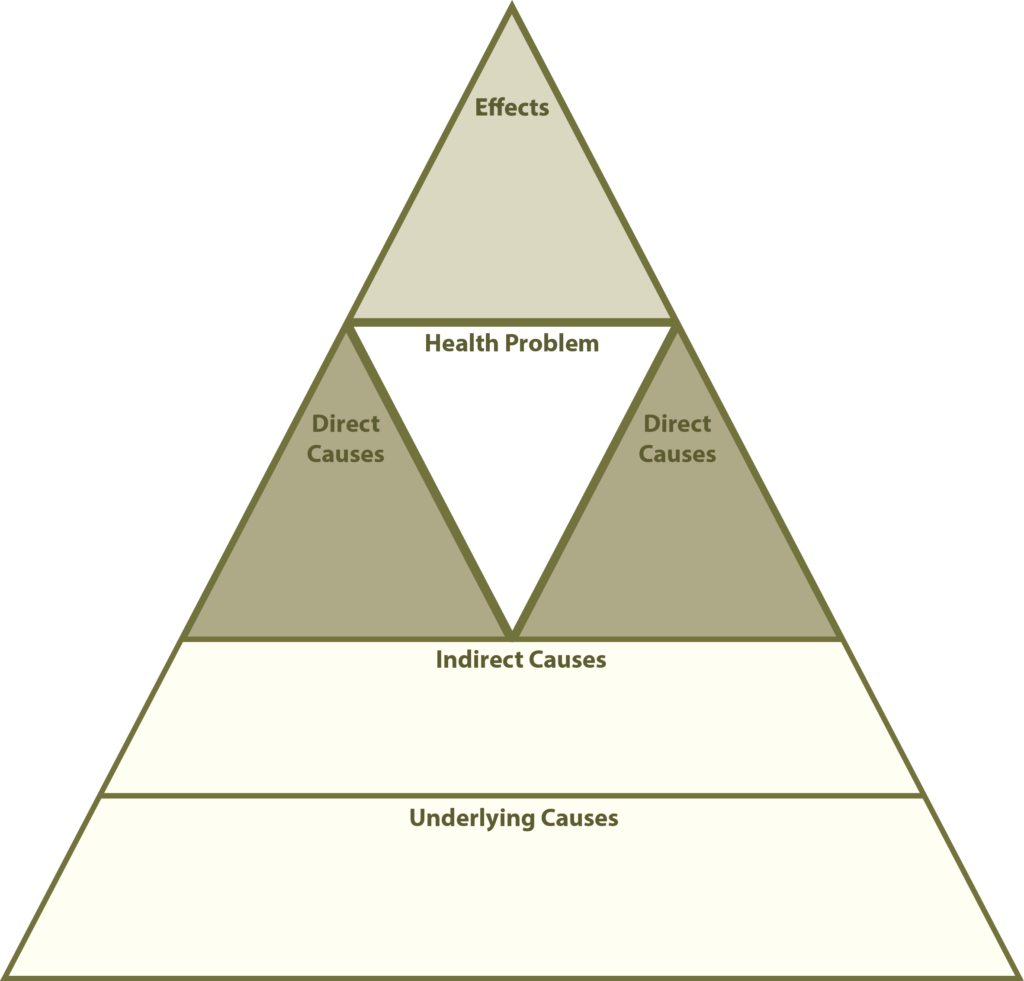For an SBCC intervention to be effective, it must address the core, underlying problem – not simply the outward effects of the problem. A root cause analysis will help you understand why there is a difference between where you want to go (shared vision) and what is happening now (current situation). Once you understand what is truly causing the problem, you can design a strategy to address that core problem.
FBP behavior results from a complex interaction of cultural, political, health systems, personal and managerial factors. You have already identified factors that influence your FBPs’ behavior. In this root cause analysis, you can explore how those factors interact and what is truly driving the problem. It is important to consider:
- Larger social norms that impact FBPs’ values, attitudes and practices
- Status indicators that influence how a FBP interacts with clients
- Policies and regulations that determine what a FBP can and cannot do
- The value the local community and health system places on FBPs
The following are the key steps to identifying the core problem:
| 1 | Write down the problem you are addressing in the Root Cause Template. For example, FBPs will not provide contraceptives to youth, or nurses are yelling at laboring mothers. |
| 2 | Start by identifying the direct causes of the problem (those things that cause or contribute to the problem). By identifying the direct causes you will begin to understand “why” we have this health problem. For example, if the problem is that FBPs are not providing contraceptives to youth, ask, “Why aren’t FBPs providing contraceptives to youth?” Write your responses on either side of the problem in the template. |
| 3 | After you determine the direct causes, brainstorm the indirect causes by asking “why do we have these direct causes?” Record the answers in the “indirect causes” of the activity template. |
| 4 | Root or underlying causes are seldom found in the most obvious causes. It is important to dig deeper and continue to ask “why?” until nearly all responses have been exhausted or roots that seem important to address are reached. If there are underlying causes that impact the health problem, you may need to address those before you can address the direct causes. For example, consider power dynamics in the community and health system, perceptions of FBPs, gender norms that govern interactions or cultural taboos. List those underlying causes in the space provided. |
| 5 | Once you have identified the underlying causes, determine the effects of the problem. These may include issues such as high rates of mother and child mortality, loss of manpower hours or other effects. List these at the top of the chart. |
| 6 | Take a look at the underlying causes you have identified and ensure they can be addressed through SBCC efforts. If you have more than one underlying cause that can be addressed through SBCC, decide which to address first by ranking them in order of importance. |
Root Cause Analysis Pyramid Template [ Download Template]
Adapted from C-Change’s Problem Tree figure in C-Module 1, Session 2
Record your prioritized core problem in the Step 2 section of the SBCC Strategy Template.



No Comments